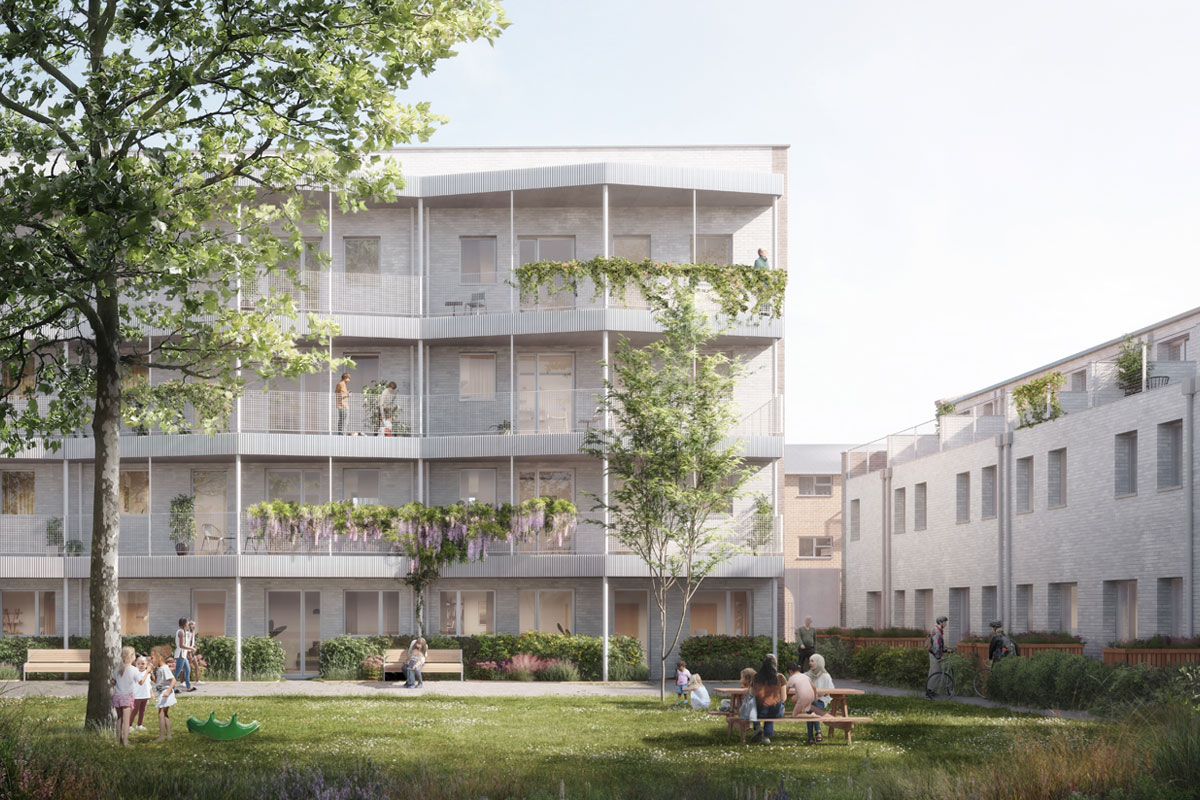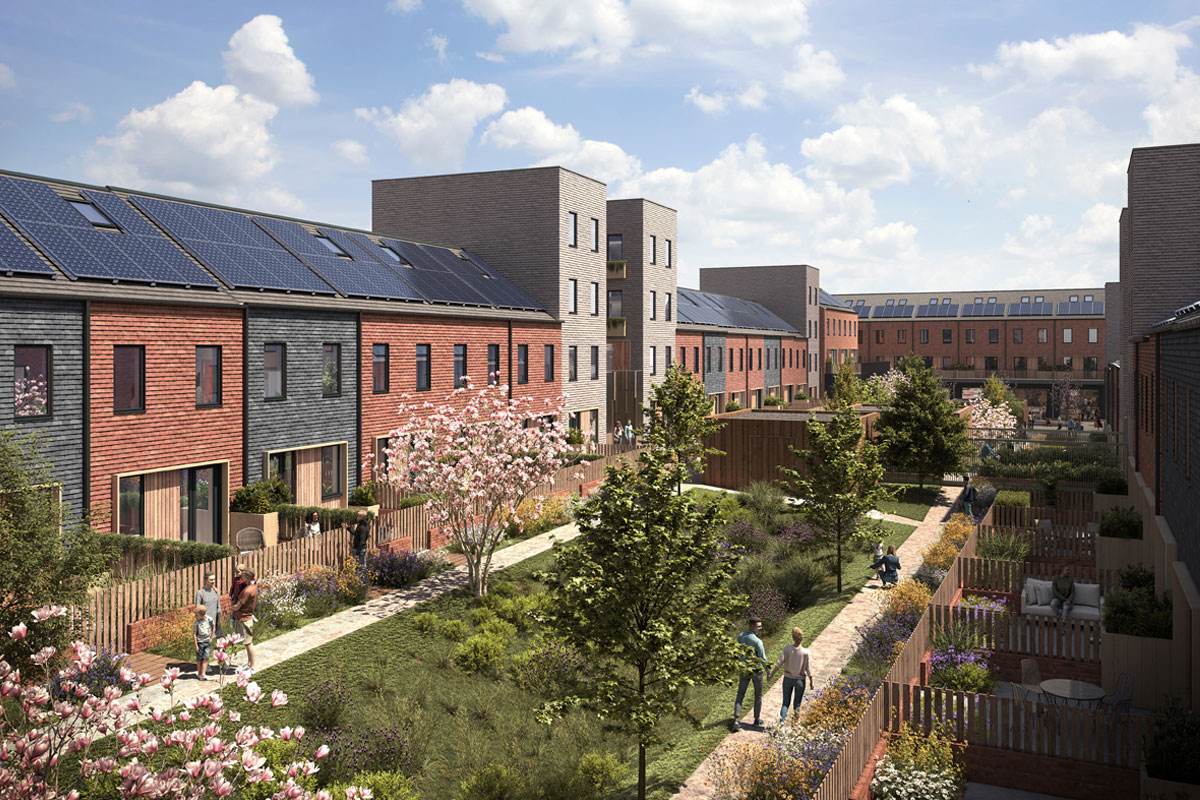3rd February 2022
WHY GOOD DESIGN AND EXCESSIVE CAR PARKING JUST DON’T MIX.
3rd February 2022
WHY GOOD DESIGN AND EXCESSIVE CAR PARKING JUST DON’T MIX.
The negative impacts of excessive car parking on urban environments are well-known. It’s detrimental to the quality of the places we build; it’s bad for the health of those who live in them; it reduces the freedoms of children and it makes the transition to a low-carbon future all the more difficult. In short, we know too much parking is bad for us, but we just can’t seem to kick the habit.
To understand how deep-rooted this addiction is, see the recent decision of Sefton Council to turn down the proposed redevelopment of Bootle town centre by SAFE, a local, not-for-profit developer.
This was a scheme that, by all accounts, promised to breathe life into an area much in need of regeneration. A community-led development of wholly-affordable homes, care facility, arts hub and nursery seems like exactly the sort of intelligent, regenerative and sustainable mixed-use development that the planning system should be set up to enable.
Instead, it was turned down, on account of offering fewer than two car-parking spaces per dwelling. This, in a town centre location, within 350m of two stations and in an area where only one in 20 homes even owns two cars.
The Bootle case demonstrates what many of us already know: you can have good, regenerative design for compact, mixed-use, healthy places, or you can have a lot of car parking. You can’t have both.
The sad truth is that excessive minimum parking requirements are endemic. And developers, as a whole – along with many architects – would rather comply with them than take the higher-risk route of arguing for lower parking provision.
Many of us who have tried to make the case will be used to coming up against intransigent highways officers, unwilling to move from adopted policy, regardless of the specifics of the location, or of the scheme.
So, to some extent, it’s understandable that most of the housebuilders have built high levels of parking into their business models. However wasteful this is in terms of land, they are cheered on by estate agents, who see private, off-road parking spaces as an intrinsic part of the new-build sales pitch.
Of course, in areas where much new housing is focused – on the edges of towns, where there is little in terms of supporting amenities or infrastructure (locations that are clearly more challenging in accessibility terms than Bootle town centre), there’s no point in denying that having a car is fairly fundamental to people’s quality of life. But we’re kidding ourselves if we think we are solving a problem by requiring higher levels of parking in these locations.
For all its laudable ambitions about beauty, the current raft of governmental guidance, policy and design coding fails to recognise that highways – and parking in particular – is the fly in the ointment when it comes to its central aim of delivering better places.
The challenge is that proper land use and infrastructure planning is difficult, complex and expensive. It requires leadership, long-term thinking and investment. It requires ambition that extends well beyond the next electoral cycle.
As with all addictions, the first step to recovery is admitting we have a problem.
This article by Jonny Anstead previously appeared in the Architects Journal.
The negative impacts of excessive car parking on urban environments are well-known. It’s detrimental to the quality of the places we build; it’s bad for the health of those who live in them; it reduces the freedoms of children and it makes the transition to a low-carbon future all the more difficult. In short, we know too much parking is bad for us, but we just can’t seem to kick the habit.
To understand how deep-rooted this addiction is, see the recent decision of Sefton Council to turn down the proposed redevelopment of Bootle town centre by SAFE, a local, not-for-profit developer.
This was a scheme that, by all accounts, promised to breathe life into an area much in need of regeneration. A community-led development of wholly-affordable homes, care facility, arts hub and nursery seems like exactly the sort of intelligent, regenerative and sustainable mixed-use development that the planning system should be set up to enable.
Instead, it was turned down, on account of offering fewer than two car-parking spaces per dwelling. This, in a town centre location, within 350m of two stations and in an area where only one in 20 homes even owns two cars.
The Bootle case demonstrates what many of us already know: you can have good, regenerative design for compact, mixed-use, healthy places, or you can have a lot of car parking. You can’t have both.
The sad truth is that excessive minimum parking requirements are endemic. And developers, as a whole – along with many architects – would rather comply with them than take the higher-risk route of arguing for lower parking provision.
Many of us who have tried to make the case will be used to coming up against intransigent highways officers, unwilling to move from adopted policy, regardless of the specifics of the location, or of the scheme.
So, to some extent, it’s understandable that most of the housebuilders have built high levels of parking into their business models. However wasteful this is in terms of land, they are cheered on by estate agents, who see private, off-road parking spaces as an intrinsic part of the new-build sales pitch.
Of course, in areas where much new housing is focused – on the edges of towns, where there is little in terms of supporting amenities or infrastructure (locations that are clearly more challenging in accessibility terms than Bootle town centre), there’s no point in denying that having a car is fairly fundamental to people’s quality of life. But we’re kidding ourselves if we think we are solving a problem by requiring higher levels of parking in these locations.
For all its laudable ambitions about beauty, the current raft of governmental guidance, policy and design coding fails to recognise that highways – and parking in particular – is the fly in the ointment when it comes to its central aim of delivering better places.
The challenge is that proper land use and infrastructure planning is difficult, complex and expensive. It requires leadership, long-term thinking and investment. It requires ambition that extends well beyond the next electoral cycle.
As with all addictions, the first step to recovery is admitting we have a problem.
This article by Jonny Anstead previously appeared in the Architects Journal.



